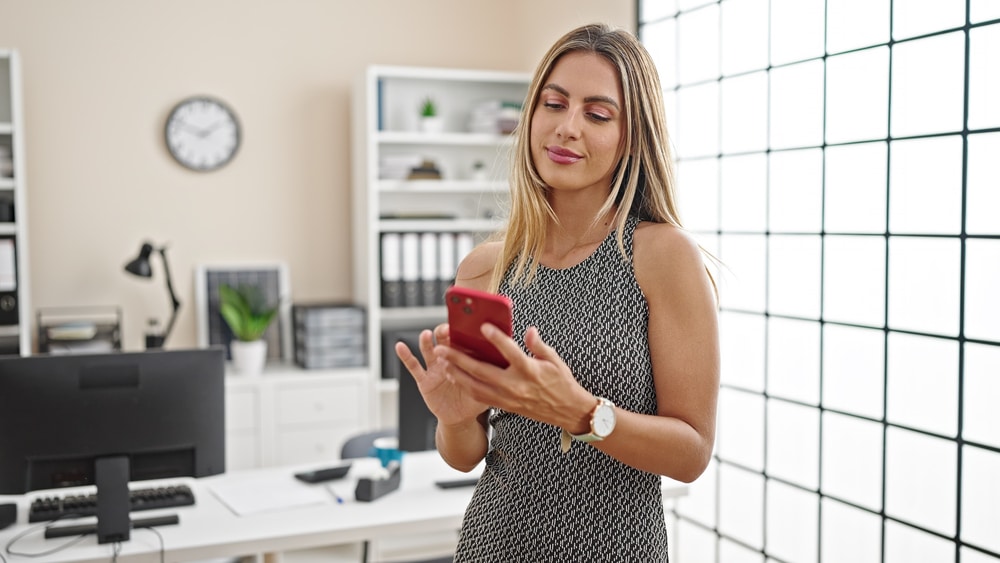Smartphones and laptops have become indispensable tools in our daily lives. They serve as our portals to the world, connecting us to work, entertainment, and each other.
However, as these devices have become more integrated into our lives, there is growing concern about the impact they have on our physical and mental well-being. The convenience they offer comes at a cost, and without careful management, the consequences can be detrimental.
Ahead we explore the ways in which smartphones and laptops affect our bodies and minds, and provide practical strategies to restore balance, ensuring that technology serves us without compromising our health.
The Physical Toll of Constant Connectivity
The physical effects of prolonged smartphone and laptop use are both visible and invisible. Some of the most common issues include poor posture, eye strain, and repetitive strain injuries.

1. Posture Problems and Musculoskeletal Pain
One of the most pervasive physical impacts of smartphone and laptop use is poor posture. The term “tech neck” has been coined to describe the hunched-over posture many of us adopt when looking at our phones or laptops. This position puts significant strain on the neck, shoulders, and upper back muscles, leading to discomfort and chronic pain. Similarly, the prolonged use of laptops, particularly when used on a desk that is not ergonomically designed, can lead to slouching, which causes lower back pain and stiffness.
Over time, this poor posture can lead to more serious musculoskeletal issues, including herniated discs and spinal degeneration. For many, these problems are compounded by a sedentary lifestyle, which weakens core muscles that are essential for maintaining proper posture.
2. Eye Strain and Digital Eye Syndrome
Another common physical issue is eye strain, often referred to as Computer Vision Syndrome (CVS). Staring at screens for extended periods can cause a range of eye-related problems, including dryness, irritation, blurred vision, and headaches. This is primarily due to the reduced blink rate when focusing on screens, which leads to decreased moisture in the eyes.
Blue light emitted by screens further exacerbates eye strain. Prolonged exposure to blue light can disrupt sleep patterns by interfering with the production of melatonin, the hormone responsible for regulating sleep. This not only impacts our ability to fall asleep but can also affect the quality of our sleep, leading to fatigue and reduced cognitive function the next day.
3. Repetitive Strain Injuries
Frequent typing and scrolling can lead to repetitive strain injuries (RSIs), such as carpal tunnel syndrome and tendonitis. These injuries occur when the same muscles and tendons are used repeatedly without adequate rest, leading to inflammation, pain, and in some cases, long-term damage. The small, precise movements required for texting and typing on laptops exacerbate these issues, particularly if done for hours on end without breaks.

The Psychological Impact of Digital Overload
While the physical effects of technology use are easier to identify, the psychological impact is often more insidious. The constant connectivity afforded by smartphones and laptops has transformed the way we think, feel, and interact with the world around us.
1. The Erosion of Attention Span
The rapid pace of information delivery through smartphones and laptops has significantly shortened our attention spans. Notifications, emails, and social media updates constantly vie for our attention, creating an environment of perpetual distraction. This not only makes it difficult to focus on tasks that require deep concentration but also leads to a phenomenon known as “continuous partial attention,” where we are never fully engaged in any one activity.
Studies have shown that multitasking, often seen as a strength in today’s fast-paced world, actually reduces productivity and cognitive function. The brain is not designed to handle multiple complex tasks simultaneously, and attempting to do so leads to mental fatigue, stress, and a decrease in the quality of work.
2. The Rise of Anxiety and Stress
Smartphones and laptops have also contributed to a significant increase in anxiety and stress levels. The constant influx of information and the pressure to respond to messages and emails immediately create a sense of urgency that can be overwhelming. Social media, in particular, has been linked to increased feelings of inadequacy, loneliness, and depression, as people compare their lives to the curated and often idealized versions presented by others online.
Moreover, the blurring of boundaries between work and personal life, facilitated by the ability to work from anywhere, has led to a culture of “always being on.” This lack of separation can prevent the mind from fully relaxing, leading to burnout and chronic stress.
3. The Impact on Sleep
As mentioned earlier, the blue light emitted by screens can disrupt our natural sleep patterns. However, the problem extends beyond just blue light. The mental stimulation provided by engaging with digital content late into the night can make it difficult to unwind and fall asleep. Whether it’s scrolling through social media, watching videos, or playing games like solitaire, the mind remains active, delaying the onset of sleep.
Poor sleep, in turn, has a cascading effect on mental health. It impairs cognitive function, reduces emotional regulation, and increases the risk of developing anxiety and depression. Over time, chronic sleep deprivation can have serious long-term health consequences, including cardiovascular disease and weakened immune function.

Restoring Balance: Strategies for Physical and Mental Well-being
Given the significant impact that smartphones and laptops can have on our bodies and minds, it is essential to take proactive steps to restore balance. The following strategies can help mitigate the negative effects of technology use and promote overall well-being.
1. Practice Good Ergonomics
To counteract the physical toll of technology use, it is important to prioritize good ergonomics. This includes setting up a workspace that promotes proper posture, with the screen at eye level, feet flat on the floor, and elbows at a 90-degree angle. Investing in an ergonomic chair and desk can make a significant difference in reducing strain on the body.
For smartphone use, consider holding the device at eye level to avoid hunching over. Taking frequent breaks to stretch and move around is also crucial. The 20-20-20 rule is a simple yet effective strategy for reducing eye strain: every 20 minutes, take a 20-second break and focus on something 20 feet away.
2. Implement Digital Detoxes
Digital detoxes, or periods of time spent away from screens, can help reduce the psychological impact of technology use. This doesn’t necessarily mean giving up technology altogether but rather setting boundaries around when and how it is used. For example, you might designate specific times of the day as “screen-free,” such as during meals or before bed.
Another approach is to limit the use of social media and other non-essential apps that contribute to stress and anxiety. Instead, focus on activities that promote relaxation and mindfulness, such as reading, spending time in nature, or engaging in hobbies that don’t involve screens.
3. Establish a Sleep-Friendly Routine
To improve sleep quality, it’s important to establish a routine that signals to your body that it’s time to wind down. This might include turning off screens at least an hour before bed, dimming the lights, and engaging in calming activities like reading or taking a warm bath. If you must use screens before bed, consider using a blue light filter or wearing blue light-blocking glasses to reduce the impact on your sleep.
Additionally, creating a sleep-conducive environment is key. This means keeping the bedroom cool, dark, and quiet, and reserving the bed for sleep and relaxation only—not for work or screen time.
4. Foster Mindful Technology Use
Mindfulness is a powerful tool for managing the psychological effects of technology. By becoming more aware of how, when, and why you use smartphones and laptops, you can make more intentional choices that align with your well-being. This might involve setting specific goals for screen time, using apps to track and limit usage, or practicing mindfulness techniques like deep breathing and meditation when you feel overwhelmed by digital demands.
Mindful technology use also extends to the content you consume. Curating your digital environment by unfollowing accounts that contribute to stress or negativity, and instead focusing on content that inspires and uplifts you, can have a profound impact on your mental health.
5. Reconnect with the Physical World
Finally, it’s important to balance digital engagement with real-world activities that engage the body and mind in different ways. Physical exercise, whether it’s a daily walk, yoga, or a more intense workout, can counteract the sedentary nature of technology use and promote physical health. Exercise also has the added benefit of reducing stress, improving mood, and enhancing cognitive function.
Engaging in social activities that don’t involve screens, such as meeting friends for coffee, playing board games, or spending time with family, can help foster genuine connections and reduce feelings of loneliness and isolation that can be exacerbated by social media.
Know when to engage
Smartphones and laptops are powerful tools that have revolutionized the way we live and work. However, their impact on our bodies and minds cannot be ignored. By understanding the physical and psychological effects of prolonged technology use, we can take proactive steps to restore balance in our lives.
Through good ergonomics, digital detoxes, sleep-friendly routines, mindful technology use, and real-world engagement, we can ensure that these devices serve us without compromising our health. In doing so, we can reclaim our well-being and enjoy the benefits of technology without being overwhelmed by its demands. After all, like a game of solitaire, the key to winning in life is to play your cards wisely, knowing when to engage and when to take a step back.


